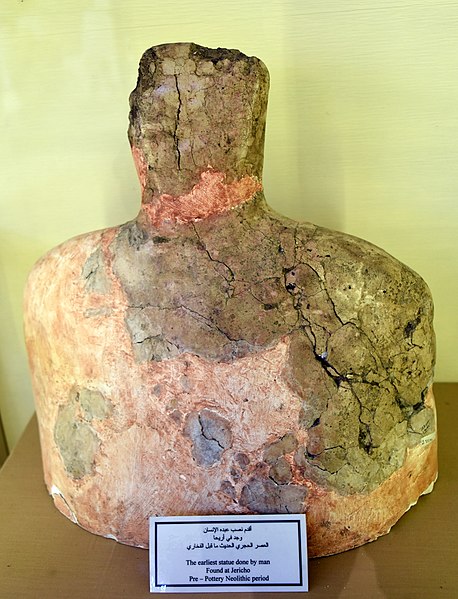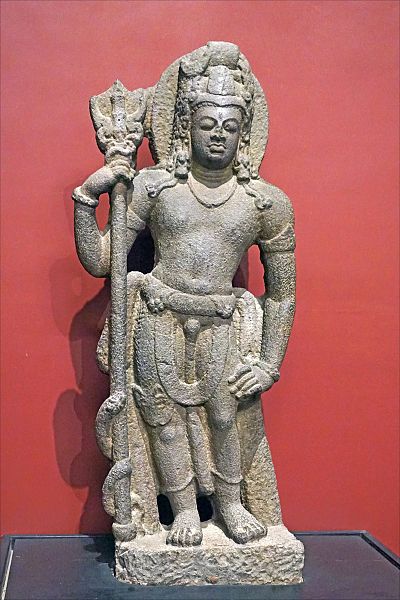A xoanon was a wooden cult image of Archaic Greece. Classical Greeks associated such cult objects, whether aniconic or effigy, with the legendary Daedalus. Many such cult images were preserved into historical times, though none are known to have survived to the modern day, except as copies in stone or marble. In the 2nd century CE, Pausanias described numerous xoana in his Description of Greece, notably the image of Hera in her temple at Samos. "The statue of the Samian Hera, as Aethilos [sic] says, was a wooden beam at first, but afterwards, when Prokles was ruler, it was humanized in form". In Pausanias' travels he never mentions seeing a xoanon of a "mortal man".
"Plank figure" of chalk, Early Cypriot III to Middle Cypriot I, 1900-1800 BCE in the Goulandris Museum of Cycladic Art, Athens).
Synthesizing the Lady of Ephesus as Diana Aventina: a Roman marble copy of a Greek replica of a lost Geometric period xoanon (18th-century engraving).
In the practice of religion, a cult image is a human-made object that is venerated or worshipped for the deity, spirit or daemon that it embodies or represents. In several traditions, including the ancient religions of Egypt, Greece and Rome, and modern Hinduism, cult images in a temple may undergo a daily routine of being washed, dressed, and having food left for them. Processions outside the temple on special feast days are often a feature. Religious images cover a wider range of all types of images made with a religious purpose, subject, or connection. In many contexts "cult image" specifically means the most important image in a temple, kept in an inner space, as opposed to what may be many other images decorating the temple.
One of the earliest known idols worshiped by humans. From Jericho, in modern-day Palestinian Territories. Pre-pottery Neolithic. Jordan Archaeological Museum, Amman, Jordan
6th-century stone murti of Shiva
Songye power figure
Reproduction of the Athena Parthenos statue at the original size in the Parthenon in Nashville, Tennessee






